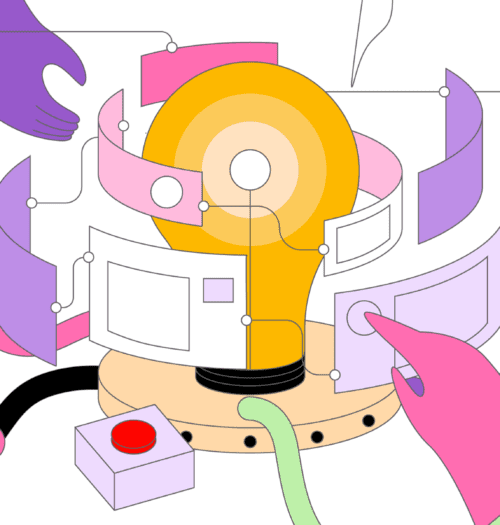🎁 Free 30-day publishing fees on Pay-As-You-GO. Get 15% off when recruiting from the UserQ Panel, with code HELLO15

The strongest user research combines mixed methods. Research with more than one type of method adds an extra layer of investigation to your project in order to answer multiple questions at once. It’s convenient, more in-depth, and will potentially save you money by preventing errors and wrong assumptions.
How to conduct effective mixed methods research
Think of conducting mixed methods research as the intersection between quantitative and qualitative — when human thoughts and feelings merge successfully with statistically relevant data to give a clearer picture of what you’re trying to find.
But what’s the best way to take the multi-faceted approach of mixed methods user research?
Here’s everything you need to know, including how triangulation in mixed methods research can super-strengthen your conclusions.
What is mixed methods research?
Put simply, mixed methods research is the use of two types of research – specifically the combination of quantitative and qualitative research to get the best of both worlds. Think of it as a blended hybrid form of user research, allowing you to find results to a question from two different data sets.
For example, imagine researching how customer service might influence people’s online shopping behavior. Mixed methods research examples could include a one-to-one interview to understand customer attitudes and perceptions (qualitative) and the use of a customer satisfaction score (quantitative).
Or say we want to find out why users are dropping out of a website’s services page. It could be that the listing isn’t what they need or that the page has a wrong/misleading link. A researcher could combine usability tests (qualitative) with web analytics (quantitative) to uncover the issue.
Combining qualitative and quantitative methods
The mixed methods approach combines both types of quantitative and qualitative data, with one compensating for the weaknesses of the other (known as triangulation, which we’ll explain shortly).
For instance, if some participants give half-hearted answers in interviews, the findings can be reinforced by collecting data in mixed methods research, such as surveys, to test the same hypothesis.
Challenges and benefits of mixed methods research
The mixed methods research design blends questions, approaches, and tools for deeper insights but also comes with challenges.
Key benefits
- Obtain richer, more comprehensive data to expand your evidence and improve the validity of your findings.
- Generate new insights and thought processes to potentially help you with problem-solving other projects across the board.
Key challenges
- Time-intensive and requires expertise in both methodologies.
- Higher costs due to recruitment and moderation processes.
- Conflicting results between data sets might require additional analysis.
When to use a mixed method research?
As with all user research, it depends on the research objective at hand…
If you can answer the research question sufficiently with either type of data, we recommend saving yourself some time (and money) by just opting for one because there’s ultimately no need to use the mixed method approach. For example, if you simply need to decide between design options, a quantitative preference test with a few follow-up questions would suffice. There’d be no reason to dive into an in-depth one-to-one interview.
Use mixed methods research when decisions require both qualitative and quantitative data. For example, quantitative data might identify a problem, while qualitative data explores the reasons behind it.
For instance, let’s revisit our online shopping example. If you want to understand satisfaction levels, quantifying with an NPS score may suffice. However, if you want to uncover specific factors influencing satisfaction, qualitative data provides deeper insights.
Carrying out mixed methods research
There are two main approaches:
Explanatory sequential design
First, collect quantitative data and follow it up with qualitative research to explain the findings. For example, identify low customer satisfaction scores, then conduct interviews to uncover the reasons behind them.
Exploratory sequential design
Start with qualitative data to build hypotheses, then validate or refine them with quantitative data. For example, conduct interviews to identify customer pain points, then distribute a survey to quantify their impact.
Analysis and triangulation in mixed methods research
After collecting data in mixed methods research, the key is finding correlations between qualitative and quantitative data sets.
For example, you could conduct employee interviews to understand workplace happiness, perform thematic analysis to identify common themes, then distribute a survey to validate those findings quantitatively.
Triangulation, a core concept in mixed methods research, enhances reliability by combining data from various sources. It minimises biases and ensures findings are robust.
Conclusion
The mixed methods research design is about tackling complex questions by combining qualitative and quantitative methods. It’s the intersection of human thoughts and numerical data that provides a clearer, more comprehensive picture of your research objective.
Related Post

Best practices for conducting remote
In this guide, we’ll let you in on UserQ’s top tips and tricks to utilise our selection of remote user

Start, Grow, Lead: A Guide
A career in which you can make a real difference to the everyday lives of customers and clients alike is

Validating your prototype FAQs: advice,
Ready to validate your prototype with our easy-to-use prototype testing tool? Well, we’ve got some must-hear advice and support to
Subscribe to our
product newsletter!
Receive emails about UserQ updates, new features,
offers and latest trends.


